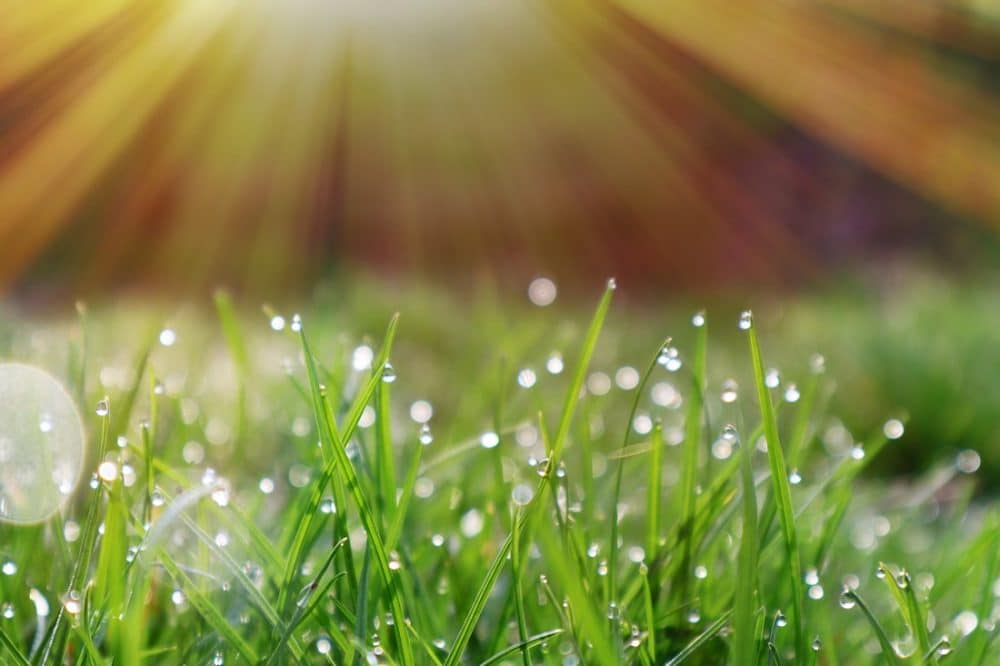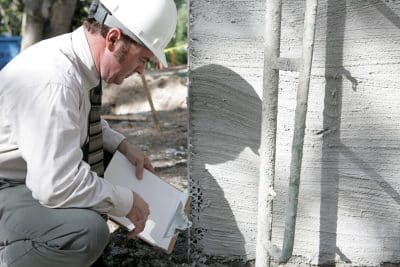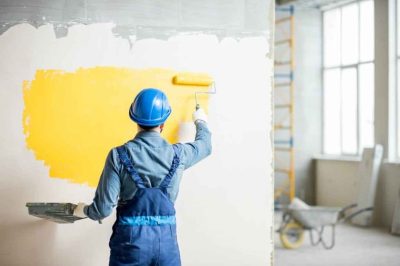
Aerating your lawn is an essential part of maintaining a healthy and lush lawn. It involves perforating the soil with small holes to allow water, air, and nutrients to penetrate the grassroots. The process is taken care of with Lawn Care Services and done using an aerator machine, which removes small plugs of soil from the ground. The plugs are left on the lawn to break down and provide additional nutrients to the grass.
There are many benefits to aerating your lawn. First, it reduces soil compaction, which can occur due to heavy foot traffic, lawn equipment, or even just regular use. Compacted soil can prevent water and nutrients from reaching the grassroots, leading to a weak and unhealthy lawn. Aerating the lawn can help to loosen the soil, allowing for better air and water circulation. This, in turn, promotes root growth and leads to a healthier and more robust lawn.
Understanding Lawn Aeration
What Is Aeration?
Lawn aeration is the process of creating small holes in the soil, which allows air, water, and nutrients to penetrate deep into the soil. This process helps to alleviate soil compaction, which can lead to poor root growth, thinning grass, and other lawn problems. Aeration is typically done using a specialized machine called an aerator, which can be rented from a garden center or home improvement store.
The Science Behind Aeration
When soil becomes compacted, it becomes difficult for air, water, and nutrients to penetrate the soil. This can lead to a host of problems, including poor root growth, thinning grass, and even the development of thatch. Aeration works by creating small holes in the soil, which allows air, water, and nutrients to penetrate deep into the soil.
The benefits of aeration are numerous. By allowing air, water, and nutrients to penetrate deep into the soil, aeration can help to promote healthy root growth, which in turn can lead to thicker, healthier grass. Aeration can also help to alleviate soil compaction, which can lead to better drainage and a healthier lawn overall.
In addition to these benefits, aeration can also help to reduce the amount of thatch in your lawn. Thatch is a layer of dead grass, leaves, and other organic matter that accumulates on the surface of the soil. When thatch becomes too thick, it can prevent air, water, and nutrients from reaching the soil, which can lead to poor root growth and other lawn problems. Aeration can help to break up thatch and promote healthy soil conditions, which can lead to a healthier lawn overall.
Core Benefits of Aeration
Aeration is a crucial lawn care practice that involves creating small holes in the soil to allow air, water, and nutrients to penetrate the grass roots. The process offers several benefits that can help improve the overall health and appearance of your lawn. Here are some of the core benefits of aeration:
Improved Air Exchange
One of the primary benefits of aeration is that it improves air exchange in the soil. When the soil becomes compacted, it can limit the amount of air that reaches the grassroots. This can lead to poor root development and cause the grass to become thin and weak. Aeration creates space for air to circulate in the soil, which can help improve root development and strengthen the grass.
Enhanced Soil Water Uptake
Aeration also helps enhance soil water uptake. When the soil becomes compacted, it can prevent water from penetrating the soil and reaching the grassroots. This can cause the grass to become dehydrated and die. Aeration creates space for water to penetrate the soil, which can help improve water uptake and prevent the grass from becoming dehydrated.
Strengthened Root System
Aeration can help strengthen the root system of your lawn. When the soil becomes compacted, it can limit the growth of the grassroots. This can cause the roots to become shallow and weak, making the grass more susceptible to damage from pests, diseases, and drought. Aeration creates space for the roots to grow deeper and stronger, which can help improve the overall health and resilience of your lawn.
Reduced Soil Compaction
Finally, aeration can help reduce soil compaction. Over time, the soil can become compacted due to foot traffic, heavy machinery, or natural settling. This can limit the amount of space available for air, water, and nutrients in the soil. Aeration creates space for these essential elements to penetrate the soil, which can help improve the overall health and appearance of your lawn.

Optimal Timing and Techniques
When to Aerate Your Lawn
The best time to aerate your lawn is during the growing season when the grass is actively growing. For cool-season grasses, this would be in the early spring or fall. For warm-season grasses, the best time to aerate is during the late spring or summer.
It’s important to aerate your lawn when the soil is moist but not too wet. If the soil is too wet, the aerator will not be able to penetrate the soil, and if it’s too dry, the soil will be too hard to penetrate. Therefore, it’s best to aerate your lawn after rainfall or after watering your lawn.
Aeration Methods
There are two methods of aeration: core aeration and spike aeration.
Core Aeration: This method involves removing small plugs of soil from the lawn, which creates holes for air, water, and nutrients to penetrate the soil. Core aeration is the most effective method of aeration, as it removes soil plugs and relieves soil compaction.
Spike Aeration: This method involves poking holes in the soil with a spike aerator. While spike aeration is less effective than core aeration, it is still a good way to improve soil drainage and relieve soil compaction. However, it can also cause additional soil compaction if the spikes are too close together.
Both methods of aeration can damage your lawn if done improperly, so be sure to hire a professional or follow the manufacturer’s instructions carefully when aerating your lawn.
Maintaining Your Lawn Post-Aeration
After aerating your lawn, it is important to follow some aftercare best practices to ensure that your lawn stays healthy and lush. Proper watering and fertilization are also essential to maintain the benefits of aeration. Additionally, overseeding can fill in any bare spots and improve the overall appearance of your lawn.
Aftercare Best Practices
After aerating your lawn, keep foot traffic to a minimum for at least a week to allow the soil to settle. This will help to prevent any damage to the newly aerated soil. It is also recommended to avoid mowing your lawn for at least a week to allow the grass to recover.
Watering and Fertilization
Proper watering and fertilization are essential to maintain the benefits of aeration. After aerating your lawn, water your lawn deeply to help the grass roots grow deeper into the soil. This will also help to prevent the soil from drying out and becoming compacted again.
Fertilization is also important after aeration to provide your lawn with the necessary nutrients. Apply a fertilizer that is high in nitrogen to help promote new growth. Be sure to follow the manufacturer’s instructions for application rates and timing.
Overseeding Tips
Overseeding can help to fill in any bare spots on your lawn and improve the overall appearance of your lawn. It is recommended to overseed your lawn immediately after aerating to allow the seeds to penetrate the soil and establish themselves.
When overseeding, it is important to choose a grass seed that is compatible with your existing grass. Be sure to follow the manufacturer’s instructions for application rates and timing. It is also recommended to water your lawn deeply after overseeding to help the seeds germinate and establish themselves.








